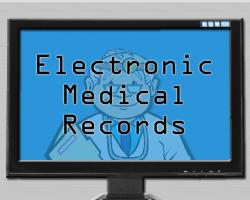Summary by EMR Industry:
- Verify patient insurance coverage and eligibility prior to every appointment;
- Ascertain if preauthorizations or referrals are required;
- Acquire photo identification, copy of the client’s insurance card, and full contact information;
- Double check that the diagnosis, ICD-9 and CPT codes are accurate and match;
- Diagnosis, treatment and procedures performed should be clearly spelled out;
- Ensure all questions on the claim are answered, that appropriate fees are entered and supporting documentation is provided;
- Submit claims electronically, in real time, utilizing an EMR.
ORIGINAL NEWS:
“There are dozens of reasons why a claim can be denied,” said Chhoda. “It could be something as seemingly minor as a single incorrect digit in an address, to major issues such as failure to obtain a preauthorization.”
Chhoda said that the first step toward drastically reducing rejection is through the implementation of an integrated EMR. The systems feature a variety of tools to submit claims in real time, identify errors and potential problems before the claim is transmitted, and monitor the status of individual claims 24/7.
The healthcare insurance environment is undergoing major changes. Many payers are incorporating new or specific requirements that must be met for patients to receive treatment and for practitioners to be paid. EMRs provide clinics with the ability to meet those requirements, ensure clients receive the care they need, and that reimbursement claims aren’t rejected.
There are many ways clinicians can avoid claim denials. Chhoda offered the following advice to facilitate the reimbursement and payment process in the current environment of healthcare insurance.
- Verify patient insurance coverage and eligibility prior to every appointment;
- Ascertain if preauthorizations or referrals are required;
- Acquire photo identification, copy of the client’s insurance card, and full contact information;
- Double check that the diagnosis, ICD-9 and CPT codes are accurate and match;
- Diagnosis, treatment and procedures performed should be clearly spelled out;
- Ensure all questions on the claim are answered, that appropriate fees are entered and supporting documentation is provided;
- Submit claims electronically, in real time, utilizing an EMR.
Using an EMR provides practitioners with the means to virtually eliminate rejections and denials, and allows clinicians to collect their fees in as little as 10 days. The systems include a wide range of abilities that can be utilized throughout every stage of the billing cycle to track and monitor claims, along with client balances that are owed.
The new information released by Chhoda incorporates new trends, technology and requirements within the healthcare industry. Practitioners must utilize every tool at their disposal to ensure they’re appropriately compensated and that their patients receive the best available treatment. An EMR accomplishes both those tasks with alacrity and efficiency.


























